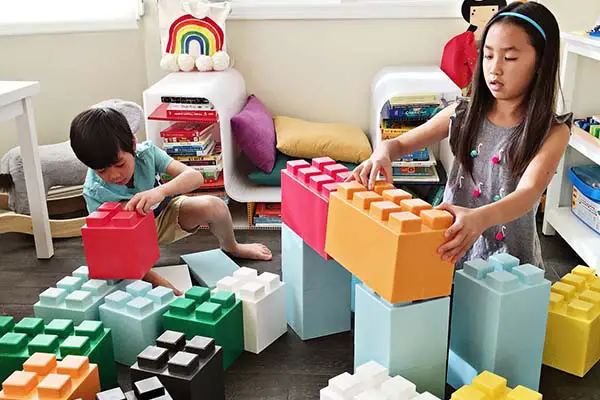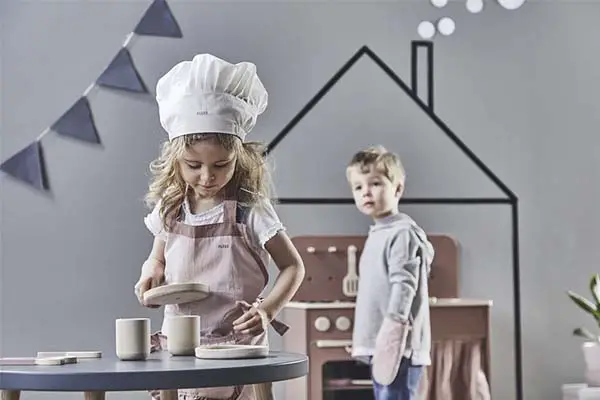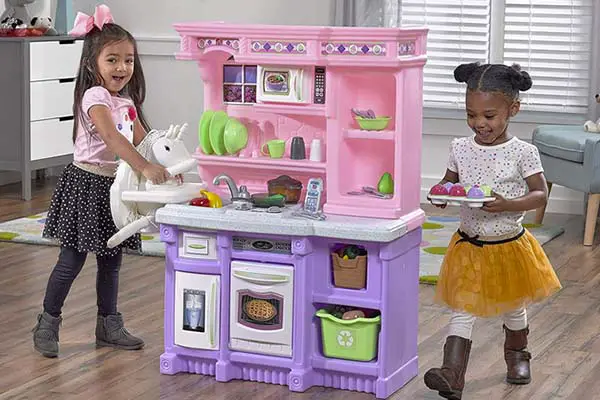Genuine love cannot be replaced with playing and equipment. However, sturdy and versatile play toys that gear towards the baby’s development and growth will help you in the child’s loving support.
In this Guide
What Makes Play Toys Great?
- Simple design
- Versatile
- Durable
- How involving it is to the child
- Straightforward – It should be easy to manipulate and comprehend
- The toy should typically encourage cooperative playing
- The toy’s material should be soft and comfortable to touch
- Safe
- Perform its intended purpose
- Generous in quantity and proportion
- Its price should be based on design and durability
#1. Design
When it comes to play toys, simplicity is key. Playthings should be detail free to allow the little ones to express themselves by creating their world. Details tend to limit children. The more unspecialized and versatile the toys are, the more absorbing and creative the play.

One of the essential preschooler equipment is the unit block and is the best example of an unstructured toy. It allows babies to create as they like, and determine the next steps and not be limited by the play material structure. Construction sets, sand, paints, blocks, and clay, are essential playthings that allow an imagination free reign.
#2. Child Involvement
Excellent playthings should always involve the child’s whole mind, spirit, and body. Such toys usually stimulate the little ones to take on different activities by themselves. Toys that make children spectators like a windup dog that turns somersaults have no play value and only entertains for a short while.
Play equipment should encourage young ones to create, explore, and offer opportunities for a dramatic play. Materials that only allow passive roles aren’t play tools but diversion objects.
#3. Versatility
Classroom play equipment should satisfy the growing need of muscles to lift, climb, push, run, and bend. Gyms that keep several children playing simultaneously is a considerable investment. Hollow blocks use larger muscles, and the wood must stand slightly rough usage and have rounded edges, comfortable to handle. Plus, the design should allow easy grip even for those with smaller hands. These blocks involve the child entirely and work well for groups in dramatic plays.
#4. Cooperative Play
Teachers should go for play items that encourage cooperative play. A happy hour of self-forgetful games with agemates can end up being the cornerstone of the little one’s life.

A play experience of a child has a foundation for every area into their adulthood, and we see them through the process. Housekeeping corners with children furniture usually fulfils the need for both cooperative play and dramatization. Besides, you can see your child creating a train from thin air and hollow blocks.
#5. Materials
The little ones will always love their play toys meaning they should be able to depend on them as well. However, babies need some time to relate and trust their playthings. Flimsy baby toys are both economically and educationally unsound.
Children tend to enjoy toys made of cloth and wood materials. Wooden toys usually have that friendly and warm feel reassuring and satisfying to smaller hands. Wood such as maple, split-resistant and hard equally fulfils the durability requirement. A well-proportioned solid wooden truck affords several miles on the muscles; providing all the selected materials – steel axles, rubber wheels, rigid body, and bearings, having in mind the use of a considerable muscle.
#6. Functionality
The materials should not get in the way of the toy’s functionality. For instance, it’s quite frustrating to learn the wheels on the truck are not moving, or the cupboard’s door can’t shut. Children also feel insulted when you give them sub-standard playthings.
The workbench tools should be real, not cheaper copies that tend to break on actual tasks. In the same breath, all wheels, doorknobs, handles, casters, and hinges should be high-quality designed to take a beating which is the play’s reality.
#7. Safety
Materials tend to affect the safety of the playthings. Go for wood that can’t splinter, wheels that don’t pinch, and carefully rounded edges and corners.
The design must be safe, as well. Secure and stable without any openings to catch limbs and tiny fingers. True play always involves a bit of risk, but ideal equipment should reduce the chances.
#8. Generosity
Playthings should offer enough room and quantity to realize the child’s intention in play. When it comes to housekeeping plays, five and four-year-olds usually want to do the dishes and also bake pies. They, therefore, need spacious ovens and big enough dishpans for dirty dishes, water, and soap.

The wheeled toys, on the other hand, should have enough space for big blocks, other materials and the child to ride on. Please provide as many blocks as possible to help the little ones work on their imagination. Besides, a generous supply of playthings allows children to play together in harmony and the teacher also to relax.
#9. Price
When comparing prices, the durability and play value of the equipment should be taken into consideration. The high initial investment is usually more economical since you wouldn’t need to replace it repeatedly. Well-designed, durable playthings outlast cheaper ones and also meets the excellent play equipment criteria.